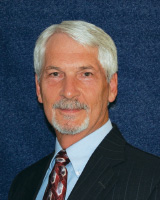Welcome to the Future of Fluid Power!
 By DAN HELGERSON, CFPAI, CFPS, CFPMT, CFPECS, CFPSD
By DAN HELGERSON, CFPAI, CFPS, CFPMT, CFPECS, CFPSD
After many years with little or no change in the components or approaches to the application of fluid power, some new ways of thinking and some new products are bursting onto the scene.
Benefits of the New Products
Digital pneumatics, Digital Displacement® pumps and motors, and smart motors with Pulse Frequency Modulation (PFM) are changing the way energy is supplied from the source and received by the actuators. The Fixed Displacement Transformer (FDT), formally referred to as a rotary flow divider or turbo-charger, is being re-examined to provide synchronization, pressure intensification and flow augmentation with surprising energy benefits. The introduction of the Variable Displacement Transformer (VDT) expands the capabilities of the FDT for velocity control, energy distribution and energy recovery for both hydraulics and pneumatics. Engineered fluids that have a wide viscosity range, great lubricity, no significant environmental impact, and are fire-retardant, allow us to push the envelope of operating temperatures. Remarkably small reservoirs make it practical to absorb the additional cost of the improved fluids, have smaller footprints, and reduced weight. Load sensing air pressure regulators allow an actuator to draw only the energy needed under varying loads.
Thinking Differently
New concepts such as pressure/volume (p/V) energy units and pressure/flow (p/Q) units of power enable us to think differently about efficiency, energy storage, and energy release. They cause us to analyze energy usage in terms of units needed compared to units consumed. They provide a vocabulary for explaining and applying the right amount of energy at the correct rate for more efficient usage of stored energy, both hydraulic and pneumatic.
With competitive means of transferring energy nipping at our heels, environmental concerns weighing heavily on the minds of everyone and huge economic issues at stake, we cannot afford to remain idle or complacent. Fluid power can and must continue to be a major player in the transfer of energy that is so necessary for our economic health. We must continually improve our efficiency, sometimes by doing what we already know how to do, and sometimes by creating new products and approaches to energy transfer.
We need to think of ourselves as Energy Professionals specializing in Fluid Power. We need to think about the entire energy transfer system; from the combustion engine or electric motor to the work being performed. We need to view every kW wasted, every Nlpm tossed away, and every Btu removed as an opportunity for improvement. To do less would be a disservice to our profession and to those who depend on our expertise.
Workforce for the Future
With change comes opportunity. Implementing the new products and concepts will require a skilled, forward thinking workforce. There will be increased demand for mechanics, technicians, and specialists, as well as engineers having an IFPS certification that validates their understanding and skill.
These concepts and products have been, or soon will be, covered in the Fluid Power Journal. So, join us as we pursue the best in fluid power. Welcome to the future!







